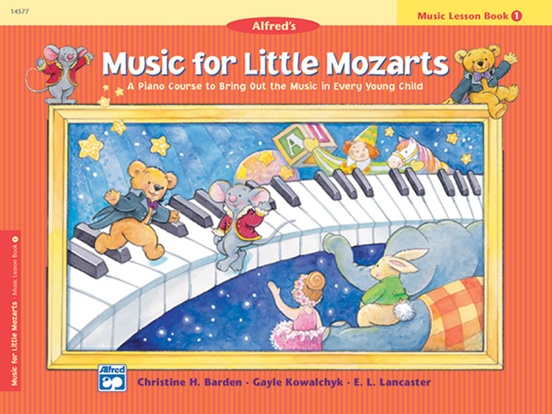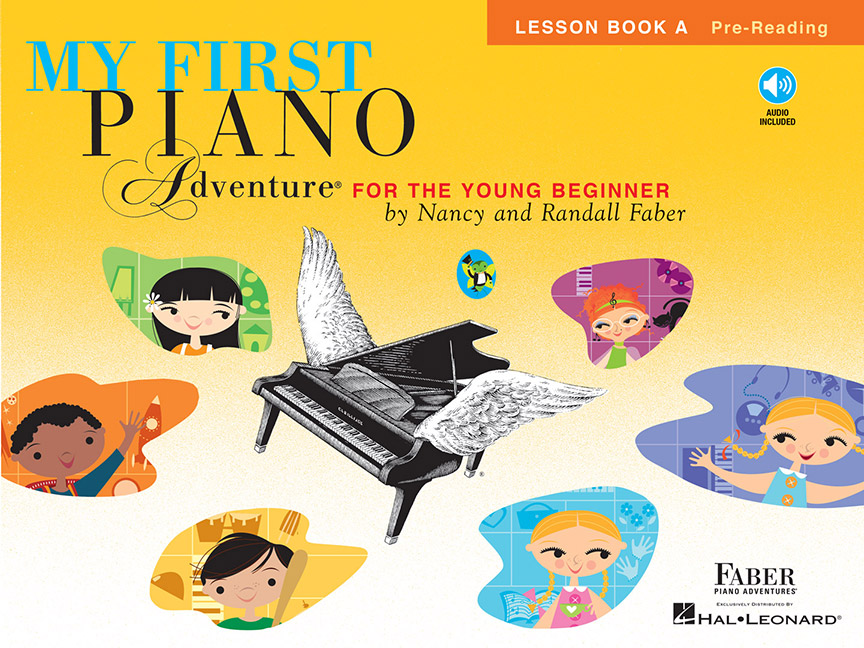📕 Why I Stopped Teaching Music for Little Mozarts to Preschool Students: A Detailed Review of Level 1
According to the Foreword of the music lesson book, Music for Little Mozarts "was designed to provide a balance between the discipline necessary for playing the [piano] and the enjoyment one gets from the process of music-making" (p. 2).
The FAQ on Alfred.com says, "When a student completes Level 4 of Music for Little Mozarts, they should continue in Alfred's Premier Piano Course, Level 1B. Note that it may require some extra work by the teacher on naming notes and moving around the keyboard." The authors expect that completion of Music for Little Mozarts will take about 2-years.
This review is for Level 1 of the Music For Little Mozarts series.

Pros
- Adorable concept complete with original characters and a narrative on each lesson book page
- Uses stuffed animals as a teaching tool for young students
- Easy for parents to help their student practice; detailed instructions and steps are included for each song
- Appealing for 3-year-olds as well
- Holistic music approach incorporating movement, singing in solfège, and coloring activities in the supplementary books
Cons
- Overall expected cost will exceed $100 if you buy the lesson book and two core books for levels 1-4
- Long and boring
- Might not appeal to older 5-year-olds and 6-year-olds
General Overview:
Grand Staff Reading: No songs use the Grand Staff.
Approach to Note Reading: Pre-staff notation only, directional by step. Notes move higher and lower on the page to show melody contour. The contour is more subtle than in the Faber pre-staff notation volumes. It's harder to distinguish that the note is moving.
Method of counting: Unit counting
Hand Position: Each page has a picture of the piano keyboard with finger numbers and later note names. Thumbs Share C is the only hand position that is introduced.
Technique: Posture and hand shape are introduced in the first lesson. These concepts are not reinforced throughout the method.
Complete range of piano: Only in activities at the beginning comparing the high and low sides of the piano and playing glissandos up and down the keyboard.
Fingering: All notes have finger numbers even if they are repeated until piano key letter names are introduced.
Adequate reinforcement of concepts: Yes.
Rate of progression: Very slow
Logical Sequence: Yes
Pieces: In the lesson book, short original songs and one folksong fragment with lyrics. The compact disk sold separately narrates the written story in the book and provides a backing track for the songs. If you subscribe to the Piano Maestro app, the songs are also included. Sometimes the students play along with the entire track, sometimes they play a fragment, such as just the E-I-E-Os in Old MacDonald. The Discovery Book includes full songs intended to be movement or rhythm activities.
Familiar Folksongs in the Music Discovery Book 1:
- If You're Happy and You Know It
- Finger Play Song
- Hickory, Dickory, Dock!
- Mexican Hat Dance
- Old MacDonald Had a Farm
- Twinkle, Twinkle, Little Star
- Beethoven - Rage over the Lost Penny
- Mozart - Variations on Twinkle, Twinkle, Little Star
- Sousa - Stars and Stripes Forever
- Mozart - Minuet in F Major
- Beethoven - Symphony No. 5 in C minor
Varied styles: No
- Dynamics: Clear explanation; forte and piano only. Beethoven Bear represents loud sounds and Mozart Mouse represents soft sounds. Forte and piano are interspersed throughout the book, but pieces are either one or the other.
- Tempo: No
- Phrasing: No
- Articulations: No
- Pedal: No
- Harmony: No
- Form: No
Theory: Music Workbook, Notespeller & Sight-play Book, and Rhythm Speller are separate purchases. The Lesson Book has keyboards printed for coloring in the introduced piano keys, but no other written activities.
Composition: No.
Improvisation: No.
Ear Training: Yes, in Music Workbook.
Sight-reading: Yes, in Notespeller & Sight-Play book.
Duets: Yes, high quality. 25 of 25 songs have duets.
Private or Group Lessons: Group or private.
In-person or Virtual: Either
Levels in Series: The Music for Little Mozarts Core Levels are 1, 2, 3, and 4. The student will be ready for Level 1 of Piano Adventures upon completion of Level C.
Supplementary Materials: A plethora of accompanying books per level, coloring books, flash cards, 7 cheaply made plush toys and probably more.
Visual Appeal: Low to Medium. Pastel, watercolor illustrations. The character designs are cute. Printing size is very small. The keyboard depicting hand position is three-dimensional on most pages and a bit hard to decipher sometimes. The hands are drawn next to the music line.
Daunting: No
Audience: Young students, ages 4-6
Audio: On CD, on Piano Maestro (subscription based), or Apple Music (subscription based).
Publisher Preview: Music For Little Mozarts (Alfred.com)
Additional Support for Teachers from the Publisher: Teacher's Handbook for Levels 1&2
My experience: I came across this method at the sheet music store at which I worked about 8 years ago. A local piano teacher came often to pick up cute stuffed animals every few weeks. I thought it was adorable.
Previously, I would try to teach preschool students with the typical piano method recommended by my lesson coordinator, Bastien. It was not designed for preschoolers. I found it particularly effective to use her stuffed bunny to teach her. She would listen to me if I used the stuffed animal as a puppet to instruct her.
At a later job, my coordinator pushed me to take on two 3-year-old boys who were brothers. I picked this method for them hoping that the Mozart Mouse and small bear stuffed animals would keep them engaged. However, I do believe that 3-year-olds are bit too young to begin independent piano lessons because of short attention spans and beginner verbal and written language skills. Eventually I was able to progress my students through level 1 and 2 of this series.
Closing Thoughts:
For very, very young students, Music for Little Mozarts is a non-threatening introduction to the keyboard. It is intended for group lessons and much of the supplementary activities are similar to early childhood group classes.
The songs are only 4 measures long (8 if you include the repeats) from the beginning to the end of the book and the introduction of new concepts is very slow. For very young students and students on the older side of the age range who may have learning struggles, this is a good series.
But from the perspective of me as the teacher and my young daughter when I began trying preschool methods with her, I've found this method to be pretty boring and frustrating because of the cost to give the full intended experience of the method.
The books mention the stuffed animal characters frequently, and not just as characters, but as learning tools. The instructions on many of the songs in this book, for example, start with "Place Mozart Mouse..." or "Place Beethoven Bear...". The stuffed animals are typically very small and they cost $7.99 each. The lesson book and supplementary books are approximately $8.99 each. I think that this is unfortunately a money grab. This series has three different authors, so I understand the need to charge enough to cover paying for their content, but the expectation for each child to have multiple books and collect the stuffed animals is saddening to me at such a high price point.
Have you used Music For Little Mozarts? If so, what was your experience? What are other options of preschool methods you have tried?
Let me know in the comments!
Until next time,
-Jenny
Music for Little Mozarts: A Piano Course to Bring Out the Music in Every Young Child
© 1999 Alfred Publishing Co., Inc. (Distributor: Alfred)
- Music Lesson Book 1





